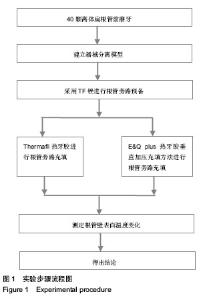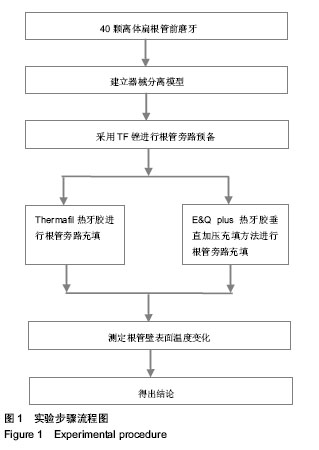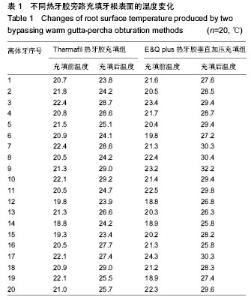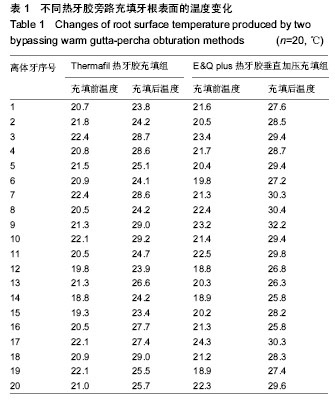| [1] 樊明文.牙体牙髓病学[M].北京:人民卫生出版社,2012:415.
[2] Nevares G,Cunha RS,Zuolo ML,et al.Success rates for removing or bypassing fractured instruments: a prospective clinical study.J Endod. 2012;38(4):442-444.
[3] Paes da Silva Ramos Fernandes LM,Rice D,Ordinola-Zapata R,et al.Detection of various anatomic patterns of root canals in mandibular incisors using digital periapical radiography,3 cone-beam computed tomographic scanners, and micro-computed tomographic imaging.J Endod. 2014;40(1): 42-45.
[4] Wu MK,R'oris A,Barkis D,et al.Prevalence and extent of long oval canals in the apical third.Oral Surg Oral Med Oral Pathol 0ral Radiol Endod.2000;89(6):739-743.
[5] Marzouk AM,Ghoneim AG.Computed tomographic evaluation of canal shape instrumented by different kinematics rotary nickel-titanium systems.J Endod. 2013;39(7):906-909.
[6] Er O,Yaman SD,Hasan M,et al.Finite element analysis of the effects of thermal obturation in maxillary canine teeth.Oral Surg Oral Med Oral Pathol Oral Radiol Endod. 2007;104(2): 277-286.
[7] Robberecht L,Colard T,Claisse-Crinquette A.Qualitative evaluation of two endodontic obturation techniques: tapered single-cone method versus warm vertical condensation and injection system: an in vitro study.J Oral Sci. 2012;54(1): 99-104.
[8] Ingle JI,Bakland LK,Baumgartner JC,et al.Ingle's Endodontics 6.PMPH-USA.2008:1098.
[9] Nakomchai S,Banditsing P,Visetratana N.Clinical evaluation of 3Mix and Vitapex as treatment options for pulpally involved primary molars.Int J Paediatr Dent. 2010;20(3):214-221.
[10] Gerek M,Ba?er ED,Kayahan MB,et al.Comparison of the force required to fracture roots vertically after ultrasonic and Masserann removal of broken instruments. Int Endod J. 2012; 45(5):429-434.
[11] Kumaran P,Sivapriya E,Indhramohan J,et al.Dentinal defects before and after rotary root canal instrumentation with three different obturation techniques and two obturating materials.J Conserv Dent.2013;16(6):522-526.
[12] Taneja S,Chadha R,Gupta R,et al.Comparative evaluation of sealing properties of different obturation systems placed over apically fractured rotary NiTi files. J Conserv Dent. 2012;15(1): 36-40.
[13] Eriksson AR,Albrektsson T.Temperature threshold levels for heat induced bone tissue imury:a vital microscopic study in the rabbit.J Prosthet Dent.1983;50:101-107.
[14] Mandava J,Chang PC,Roopesh B,et al.Comparative evaluation of fracture resistance of root dentin to resin sealers and a MTA sealer: An in vitro study. J Conserv Dent.2014 17(1): 53-56.
[15] Viapiana R,Guerreiro-Tanomaru JM,Tanomaru-Filho M.Investigation of the Effect of Sealer Use on the Heat Generated at the External Root Surface during Root Canal Obturation Using Warm Vertical Compaction Technique with System B Heat Source. J Endod.2014;40(4):555-561.
[16] Arora A,Taneja S,Kumar M.Comparative evaluation of shaping ability of different rotary NiTi instruments in curved canals using CBCT.J Conserv Dent.2014;17(1):35-39.
[17] Stern S,Patel S,Foschi F,et al.Changes in centring and shaping ability using three nickel–titanium instrumentation techniques analysed by micro-computed tomography (μCT).Int Endod J.2012;45(6):514-523.
[18] Taneja S,Chadha R,Gupta R,et al.Comparative evaluation of sealing properties of different obturation systems placed over apically fractured rotary NiTi files.J Conserv Dent. 2012;15(1): 36-40.
[19] Hashem AA,Ghoneim AG,Lutfy RA.Geometric analysis of root canals prepared by four rotary NiTi shaping systems.J Endod. 2012;38(7):996-1000.
[20] Pérez-Higueras JJ,Arias A,de la Macorra JC.Cyclic fatigue resistance of K3, K3XF, and twisted file nickel-titanium files under continuous rotation or reciprocating motion.J Endod. 2013;39(12):1585-1588.
[21] Gambarini G ,Gerosa R,De Luca M,et al. Mechanical properties of a new and improved nickel-titanium alloy for endodontic use: an evaluation of file flexibility. Oral Surg Oral Med Oral Pathol Oral Radiol Endod.2008;105(6):798-800.
[22] Kwon SJ,Park YJ,Jun SH,et al.Thermal irritation of teeth during dental treatment procedures.Restor Dent Endod. 2013,38(3):105-112.
[23] Tennert C,Jungbäck IL,Wrbas KT.Comparison between two thermoplastic root canal obturation techniques regarding extrusion of root canal filling--a retrospective in vivo study.Clin Oral Investig.2013;17(2):449-454.
[24] Shashidhar C,Shivanna V,Shivamurthy GB,et al.The comparison of microbial leakage in roots filled with resilon and gutta-percha: An in vitro study.J Conserv Dent. 2011;14(1): 21-27.
[25] Lee FS,Van Cura JE,BeGole E.A comparison of root surface temperatures using different obturation heat sources.J Endod. 1998;24(9):617-620.
[26] Emmanuel S,Shantaram K,Sushil KC,et al. An In-Vitro Evaluation and Comparison of Apical Sealing Ability of Three Different Obturation Technique - Lateral Condensation, Obtura II, and Thermafil.Int Oral Health.2013;5(2):35-43.
[27] Alhashimi RA,Mannocci F,Foxton RM.Synthesis and preliminary evaluation of a polyolefin-based core for carrier-based root canal obturation.Dent Endod. 2013; 38(3):105-112.
[28] 宋琳,刘萍,章锦才,等.Thermafil热牙胶根充系统根充时牙根表面温度变化[J].现代口腔医学杂志,2007,21(2):183-184.
[29] Proos KA,Swain MV,Ironside J,et al.Finite element analysis studies of a metal-ceramic crown on a first premolar tooth.Int J Prosthodont.2002;15(6):521-527.
[30] 林映荷,李惠玲,王小蓉,等.正常青壮年前牙牙体组织厚度的测量[J].广东牙病防治,2002,10(1):47-48.
[31] Kwon SJ,Park YJ,Jun SH,et al.Thermal irritation of teeth during dental treatment procedures.Restor Dent Endod. 2013; 38(3):105-112.
[32] Bouska J,Justman B,Williamson A,et al.Resistance to cyclic fatigue failure of a new endodontic rotary file.J Endod. 2012; 38(5):667-669.
[33] Marzouk AM,Ghoneim AG.Computed tomographic evaluation of canal shape instrumented by different kinematics rotary nickel-titanium systems. J Endod. 2013;9(7):906-909.
[34] Castelló-Escrivá R,Alegre-Domingo T,Faus-Matoses V,et al.In vitro comparison of cyclic fatigue resistance of ProTaper, WaveOne, and Twisted Files. J Endod. 2012;38(11): 1521-1524.
[35] Bhagabati N,Yadav S,Talwar S,et al.An in vitro cyclic fatigue analysis of different endodontic nickel-titanium rotary instruments.J Endod.2012;38(4):515-518. |



